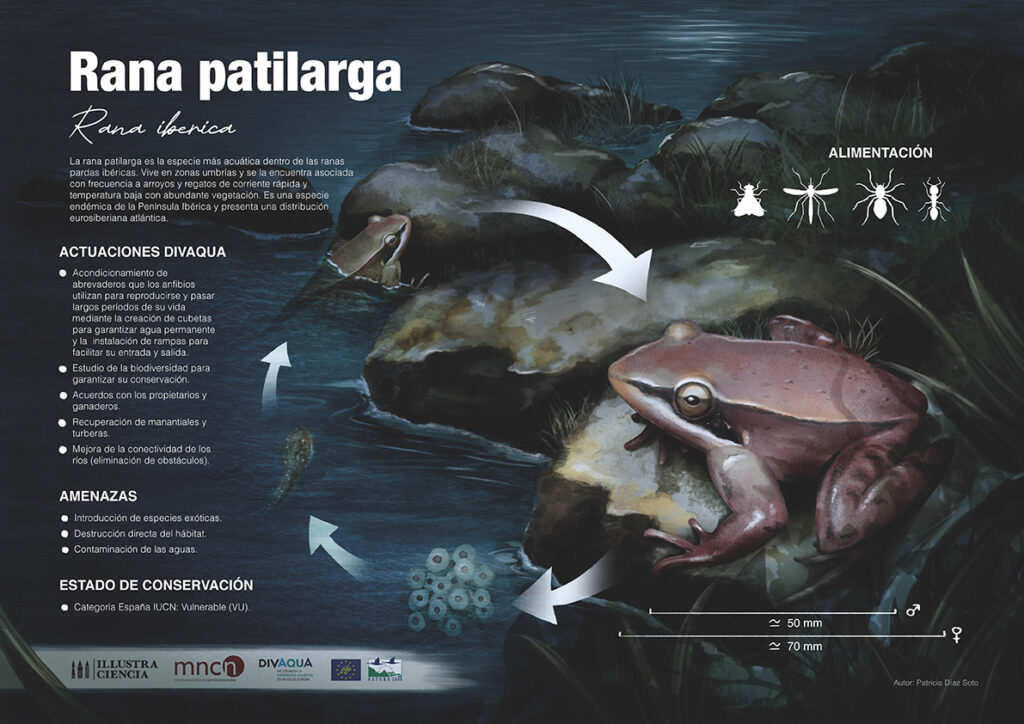The long-legged frog is the most aquatic species of all the brownish Iberian frogs. It lives in shady areas and is frequently associated with fast-flowing, low-temperature brooks and streams with abundant vegetation. It is an endemic species of the Iberian Peninsula and has a Euro-Siberian Atlantic distribution.
DIVAQUA ACTIONS
– Adaptation of water troughs that the amphibians use to reproduce and in which they spend long periods of their life, through the creation of water trays to guarantee permanent water and the installation of ramps to make it easy for them to get in and out.
– Biodiversity study to guarantee their conservation.
– Agreements with owners and farmers.
– Recovery of springs and peatlands.
– Improvement of river connectivity (removal of barriers).
